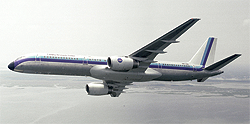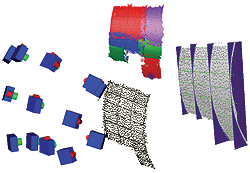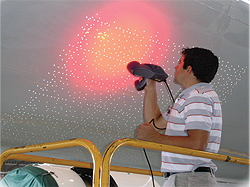 Situation
Situation
In 1994, NASA obtained a specially modified Boeing 757-200 to be used for aeronautical research. Named the ARIES, or Airborne Research Integrated Experiments System, the aircraft has gone through numerous customizations and modifications to earn its “flying laboratory” nickname.
Over time, NASA realized that in order to maintain the ARIES as its premier research aircraft, they would need to modify the fairings. In order to do this, NASA would need much higher quality CAD data of the jet in certain sections than the CAD data they already had. Due to tolerance stacking, the previous CAD data could not be used to accurately model and attach the new fairings.
We have seen increases in accuracy, manufacturing efficiency, and product quality, and would not hesitate to work with you again in the future.”
 Solution
Solution
3DScanCo — a division of Laser Design Inc — was contracted by ARINC to perform on-site 3D scanning services at Langley Air Force Base in Virginia. The Handyscan 3D quickly became the ideal choice for the project due to its accuracy and portability in scanning sections high up on the plane. Using bolt-hole locations and existing features of the plane to align the data, 3DScanCo scanned five critical sections of the 757 for fairing attachment placement.
Each section was accurately aligned with the existing scan data based on known distances in rivet placements on the plane, and the rivet placements in the scan data. Photogrammetry was used to ensure that the scan data and especially the rivet distances were accurate for the critical alignment step. 3DScanCo used this scan data to reverse engineer surfaces which were then incorporated them into the existing CAD data.
 Results
Results
The CAD data supplied by 3DScanCo fit perfectly on the existing CAD data, resulting in NASA’s ability to model and design fairings to attach to the plane. Had NASA not utilized 3DScanCo’s scanning technologies, the only alternative would have been to manually shape and tool fairings to the plane, which would have required considerable amount of time, money, and trial-and-error rework. The scan data generated by 3DScanCo resulted in much more accurate and higher quality CAD data, which lead to the custom fairings fitting on the first time.
